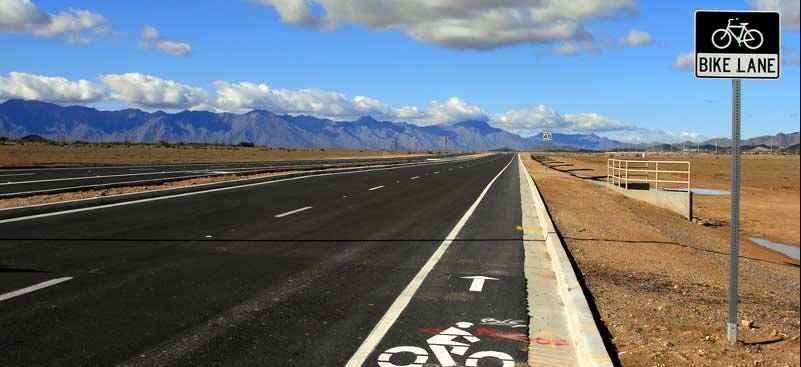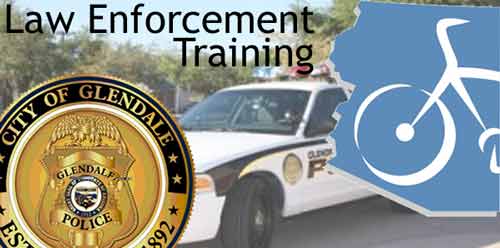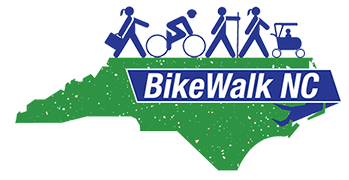People Who Ride Bicycles on the Roadway Already Pay Their Share

When there is conversation about building bicycle facilities, we often hear rumblings that people who ride bicycles don’t pay their fair share of the expense of transportation infrastructure. This statement is not true. Bicycle riders often pay more than their share for the amount of bicycle infrastructure created, and for the amount of roadway they actually use. Bicycle riders also provide more financial contributions to the local economy then drivers of cars.
Most bicycle facilities in the United States are built at the local level, with little or no funding coming from the federal taxes on gasoline and truck tires that support the Federal Highway Trust Fund (HTF). In 2017, 74% of the $177B spent on road and highway infrastructure in the United States came from state and local government.[i] As a result, the argument that all or most roadway money comes from the HTF and should not be used for bicycle infrastructure is not supported. The money used locally usually comes from general tax payer dollars, and people who don’t drive cars pay those taxes. Another source of local transportation money comes from property tax, which homeowners pay directly and renters pay through their rent.[ii]
Overall, in the U.S., close to 50% of roadway construction and maintenance is paid for by income tax and other non-gas tax revenue sources. [iii] [iv]
Cost to Support Roadways
Based on estimates from 2015, the average U.S. household could be paying more than $1100 per year in taxes and other costs to support roadways. This includes households that don’t own cars or use alternative sources of mobility. [v]
- $597 in general taxes for road construction and repair
- $199 to $675 for subsidies to motor vehicle drivers (parking, gas tax exemptions, etc.)
- $216 in government expenses related to traffic crashes
- $93 to $360 for costs related to air pollution
Many of the costs related to motor vehicles (air pollution, noise pollution, crash damage to non-drivers and property, etc.) are paid for by crash victims, taxpayers and the government (which gets most of its money from taxpayers).[vi] Jeff Speck, the author of the book the Walkable City, estimates that in the U.S. vehicle drivers are subsidized $10 for every $1 they actual pay for infrastructure.[vii]
Households without Cars
The U.S. Census Bureau estimates that about 9% of households do not have regular access to a motor vehicle for transportation.[viii] In the greater Phoenix area that is estimated to be about 6%.[ix] Some research shows the number of U.S. households without motor vehicles has increased slightly from 2010.[x] The 2016 American Community Survey showed both a decrease in single vehicle drivers commuting and an increase in people on bicycles commuting.[xi]
Local Transportation Funding
Determining how transportation is funded at the local level is not always the easiest. For this article a number of Arizona communities provided information on how to access their transportation budget on line. None of the sites had clear “dollars in to dollars out” comparisons. As an example, the City of Mesa 2020 budget for transportation shows spending of $39.53M. Based on conversations with city staff, that money comes from the State Highway Users Revenue Fund (HURF) and a funding source called The Local Street Fund. Money from these sources covers Mesa’s street repair and maintenance. Street Bonds and the Transportation Fund support specific transportation projects, with a projected 2022 spending of $211M. Using the budgets posted online there did not appear to be clear way to determine what spending went to bicycle infrastructure.[xii]
Regional Transportation Funding
Maricopa and Pima Counties currently have one half cent sales taxes that support their regional transportation plans. Again this is paid by all shoppers regardless of motor vehicle ownership or miles driven. In Maricopa County only 10.5 percent of the money collected through that tax goes to arterial street improvements; 56.2 percent goes to freeways and state highways, and 33.3 percent going to public transit. [xiii]
State Transportation Funding
In Arizona, fuel and motor vehicle license taxes support 80% of the Highway Users Revenue Fund (HURF), [xiv] but 62% of state transportation spending coming from state and local taxes.[xv] ADOT states that HURF is constrained by use of more fuel efficient vehicles, inflation, and the lack of an increase in the state gas tax for over 25 years.[xvi]
Federal Transportation Funding
Taking the federal gas tax, the heavy truck tire tax, and other motor vehicle user fees into consideration, the amount of money collected has never covered the cost of operating the part of the roadway system they are supposed to support.[xvii] Between 2008 and 2018, 114.7 billion dollars were transferred from the General Fund of the Treasury to the Federal Highway Trust Fund (HTF).[xviii] Moneys in the Federal Treasury’s General Fund are primarily tax dollars collected from people and businesses. [ii]
As a result of inflation, improved motor vehicle fuel economy, reduced motor vehicle miles driven, and the increase in electric vehicles, moneys collected for the HTF are not expected to increase. [ii] Congressional Budget Office estimates, made in 2020, are that the HTF will hit a zero balance starting in 2022, and that zero balance will continue for all future years unless there is a change to the gas tax.[xix] [xx] It is estimated that highway spending would need to increase by 40% over the next 10 years to fund all existing highway construction and maintenance projects. [xxi] The deficit in the HFT is expected to reach $200B by 2030.[xxii]
Motor Vehicle Driver Subsidies
Drivers of motor vehicles can receive federally tax supported subsidies that are not available riders of bicycles. Employers can receive a subsidy for electric vehicle charging stations, but not for chargers for e-bikes. People can put part of their salary in a tax free fund for workplace car parking or public transit, but there isn’t tax free fund that supports bicycle riding. There is currently a tax credit for purchase of an electric car, but no tax credit for the purchase of an electric or non-electric bicycle. [xxiii]
Bicycle Rider Impact on Roadways
At the local level, bicycle riders have a more positive financial impact compared to motor vehicles when considering pollution, roadway maintenance, health, and other measures. Bicycle infrastructure uses fewer resources to build and maintain. Bicycle riders have less impact on the roadway, use a fraction of the space used by motor vehicles, and cause less crashes. A review of 10 studies showed that the financial benefit of active transportation programs was greater than the cost of those programs. [xxiv]
Bicycle Rider Impact on Local Economy
Bicycle riders also do more to improve the local economy. A number of studies show that people who ride bicycles in urban centers spend more money and shop more often with local businesses than people who drive cars.[xxv] [xxvi] [xxvii] This likely means that bicycle riders are paying more money in local taxes than vehicle drivers. In an area of Los Angeles where motor vehicle lanes were removed and replaced with bicycle lanes, the sales taxes collected almost doubled.[xxviii]
Conclusion
As people who ride bicycles, we are clearly supporting our share of the traffic infrastructure we use to ride, along with supporting infrastructure for motor vehicles. Keep this in mind when advocating for new bicycle facilities and the maintenance of existing infrastructure.
—–
[i] _____, The Highway Trust Fund Explained, Peter P. Peterson Foundation, 2020, https://www.pgpf.org/budget-basics/budget-explainer-highway-trust-fund
[ii] Blue, Bikenomics, How Bicycles Can Save The Economy, Microcosm Publishing, 2016
[iii] Cammenga, How Are Your State’s Roads Funded?, Tax Foundation, 2019, https://taxfoundation.org/states-road-funding-2019/
[iv] Dutzik, et al., Who Pays for the Roads? How the “Users Pay” Myth Gets in the Way, United States Public Interest Research Group (U.S. PIRG), 2015, https://uspirg.org/sites/pirg/files/reports/Who%20Pays%20for%20Roads%20vUS.pdf
[v] Ibid.
[vi] Ibid.
[vii] Birenbaum, How to End the American Obsession With Driving, Vox, 2021, https://www.vox.com/22662963/end-driving-obsession-connectivity-zoning-parking
[viii] _____, American Community Survey, Why We Ask About Vehicles Available, U.S. Census Bureau, ____, https://www.census.gov/acs/www/about/why-we-ask-each-question/vehicles/
[ix] Peterson, Car Owner Statistics (2021 Report), ValuePenguin, 2021, https://www.valuepenguin.com/auto-insurance/car-ownership-statistics
[x] Gershgorn, After decades of decline, no-car households are becoming more common in the US, Quartz, 2016, https://qz.com/873704/no-car-households-are-becoming-more-common-in-the-us-after-decades-of-decline/
[xi] Tomer, America’s commuting choices: 5 major takeaways from 2016 census data, Brookings, 2017, https://www.brookings.edu/blog/the-avenue/2017/10/03/americans-commuting-choices-5-major-takeaways-from-2016-census-data/
[xii] _____, City of Mesa’s Open Budget, City of Mesa, AZ, 2021, https://openbudget.mesaaz.gov/#!/year/default
[xiii] _____, 2022-2026 Current Five-Year Transportation Facilities Construction Program, Arizona Department of Transportation, 2021, https://apps.azdot.gov/ADOTLibrary/Multimodal_Planning_Division/FiveYrPlan/Five_Year_Program-FY2022-26.pdf
[xiv] Boesen, Who Will Pay for the Roads?, Tax Foundation, 2022, https://taxfoundation.org/road-funding-vehicle-miles-traveled-tax/
[xv] _____, 2022-2026 Current Five-Year Transportation Facilities Construction Program.
[xvi] Ibid.
[xvii] Dutzik, et al., Who Pays for the Roads? How the “Users Pay” Myth Gets in the Way.
[xviii]_____, The Highway Trust Fund Publication No. FHWA-PL-17-011, U.S. Department of Transportation, Federal Highway Administration, Office of Policy and Government Affairs, 2017 https://www.fhwa.dot.gov/policy/olsp/fundingfederalaid/07.cfm
[xix] York, How Did We Ever Agree to Infrastructure Investments, Tax Foundation, 2021, https://taxfoundation.org/infrastructure-investment/
[xx]_____, Highway Trust Fund Accounts—CBO’s Baseline as of March 6, 2020, Congressional Budget Office, 2020, https://www.cbo.gov/system/files/2020-03/51300-2020-03-highwaytrustfund.pdf
[xxi] _____, The Highway Trust Fund Explained.
[xxii]_____, Supplemental Data for The Budget and Economic Outlook: 2021 to 2031, Congressional Budget Office, 2021, https://www.cbo.gov/system/files/2021-02/51300-2021-02-highwaytrustfund.pdf
[xxiii] Zipper, What if Congress Helped Bicyclists, and Not Drivers, for Once?, Slate, 2021, https://slate.com/business/2021/09/bicycles-reconciliaton-congress-ebikes.html
[xxiv] Dutzik, et al., Who Pays for the Roads? How the “Users Pay” Myth Gets in the Way.
[xxv] _____, Measuring the Street: New Metrics for 21st Century Streets, New York City DOT, _____, http://www.nyc.gov/html/dot/downloads/pdf/2012-10-measuring-the-street.pdf
[xxvi] Ayre, Salt Lake City Street’s Decision To Replace Parking With Bike Lanes Boosted Business, bikocity, 2016, https://bikocity.com/salt-lake-city-streets-decision-replace-parking-bike-lanes-boosted-business/
[xxvii] Clifton, et al. , Consumer Behavior and Travel Choices: A Focus on Cyclists and Pedestrians, Portland State University Department of Civil and Environmental Engineering, 2012, https://nacto.org/docs/usdg/consumer_behavior_and_travel_choices_clifton.pdf
[xxviii] McCormick, York Blvd, The Economics of a Road Diet , UCLA Luskin School of Public Affairs, _____, https://nacto.org/docs/usdg/yorkblvd_mccormick.pdf











